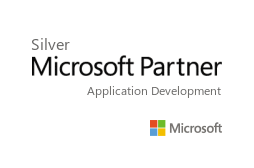Increase productivity and boost employee collaboration with the Cloud
Cloud Computing helps your small business accomplish more with less. We will help you get there.
Save on IT maintenance
Save money on maintaining your IT infrastructure or purchasing business-grade devices upfront.
Secure your business
Cloud services have built-in enterprise-grade cybersecurity solutions that keep your data safe.
Scale effortlessly
Using Cloud services lets you easily accommodate business and budget for growth or temporary spikes in service usage.

Get a free CLOUD-READINESS assessment -
no strings attached
Harnessing Cloud Services helps reach efficiency and cost-efficiency that hasn’t been achievable to small businesses in the past.
Azure Cloud Services, Windows 365 and Microsoft 365 allow employees to access their files and applications securely from anywhere and from any device without technical overhead and data safety concerns.
Since you only pay for what you use, it has proven to be affordable for even the smallest of businesses, making collaboration between employees and clients more streamlined while securing your data.
Many nonprofits rely on problematic on-premise servers or legacy technology that hold their institutional records from past years or even decades. Putting a band-aid on recurring issues while dealing with disruptions take resources away from furthering your mission.
Using Cloud Services and utilizing Microsoft 365 simplifies required documentation management and reduces administrative overhead.
Lastly, keeping your donors’ or members’ data secure and complying with nonprofit audits can become much more streamlined with the help of Cloud Services.
PRO works with Microsoft to set up Azure Cloud services, which can, in many cases, even help cut costs and provide more reliability and flexibility than ever before. Fill out the form on this page to get a customized estimate along with suggestions to advance your nonprofit organization.
One of the main differences between a virtual and remote desktop is storage. With a remote desktop, all data is stored in the local device that you can then access remotely. With a virtual desktop, your data and apps are stored in the Cloud, accessible from any device and not prone to hardware failure.
To access your remote desktop, your computer needs to be turned on, while you can connect to a virtual desktop even if it’s turned off, which offers more reliability. Both sysytems require an internet connection.
Virtual desktops also offer more security as your data is stored centrally. If your device is stolen or hacked, data loss is not a significant issue.
Microsoft 365 convenient suite includes the following Cloud-based business apps:
- Outlook for email and calendar
- Excel for data analysis
- Word for word/document processing
- PowerPoint for presentations
- OneNote for note taking
- Teams for web meetings and collaboration
- OneDrive for file sharing and storage
- SharePoint for team-based file sharing and collaboration
- Microsoft Defender for protection against hidden threats
- InTune for advanced device management and data protection
- Bookings for making online appointments
- PowerAutomate to eliminate repetitive administrative tasks
The PROs help you set up your Microsoft 365 business suite, train your employees and leverage the built-in advanced security and intelligent Cloud services so you could focus on your work.
- Increase your employee's productivity and collaboration
- Protect your business data with increased security
- Save costs on infrastructure upgrades or setup
- Get access to the best AVD (Azure Virtual Desktop) technology
- Get comprehensive training and onoing support
- Only pay for the amount of service you use
- Get high service availability and reliability
- Enjoy flexibility based on evolving business needs

